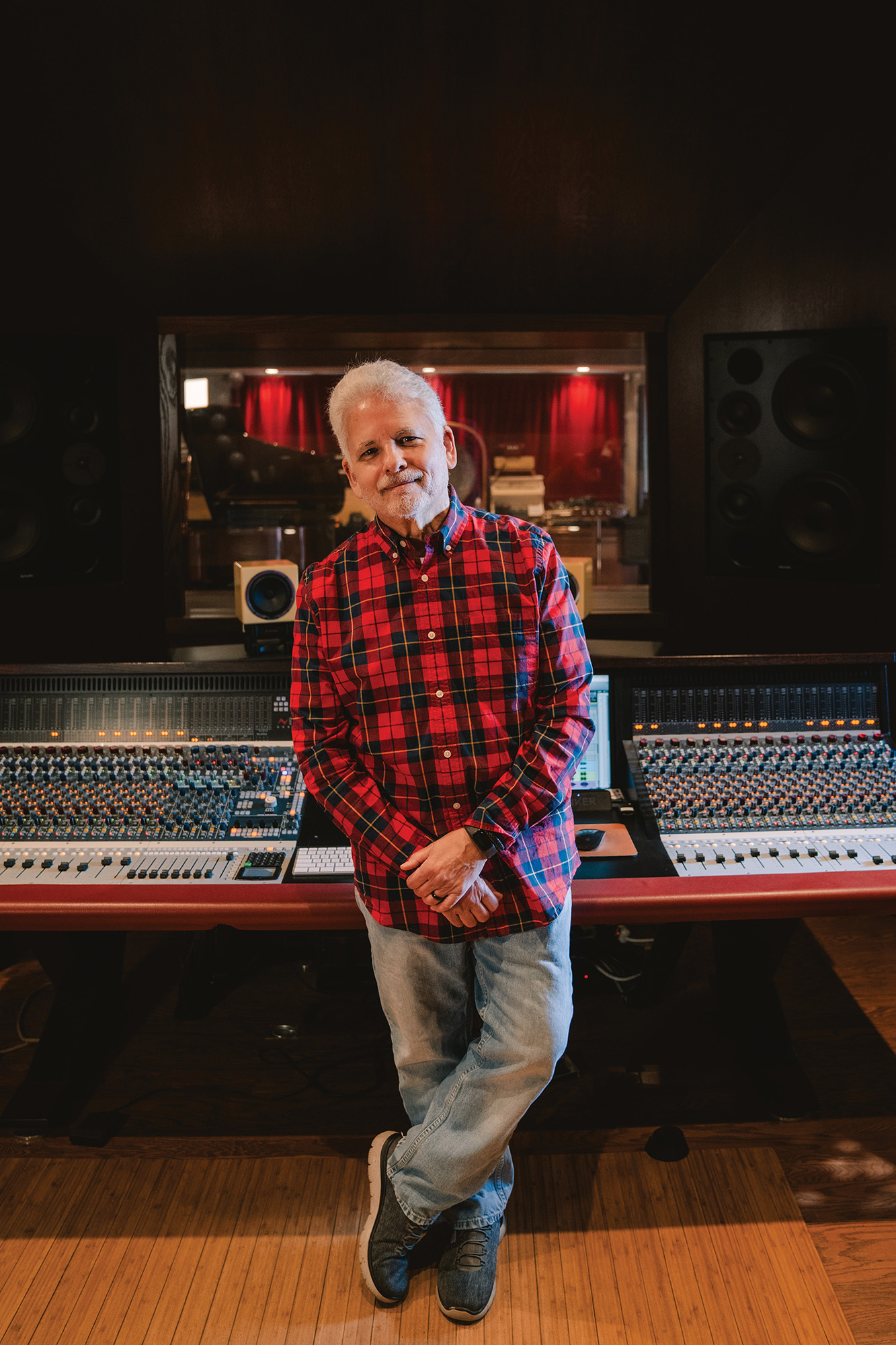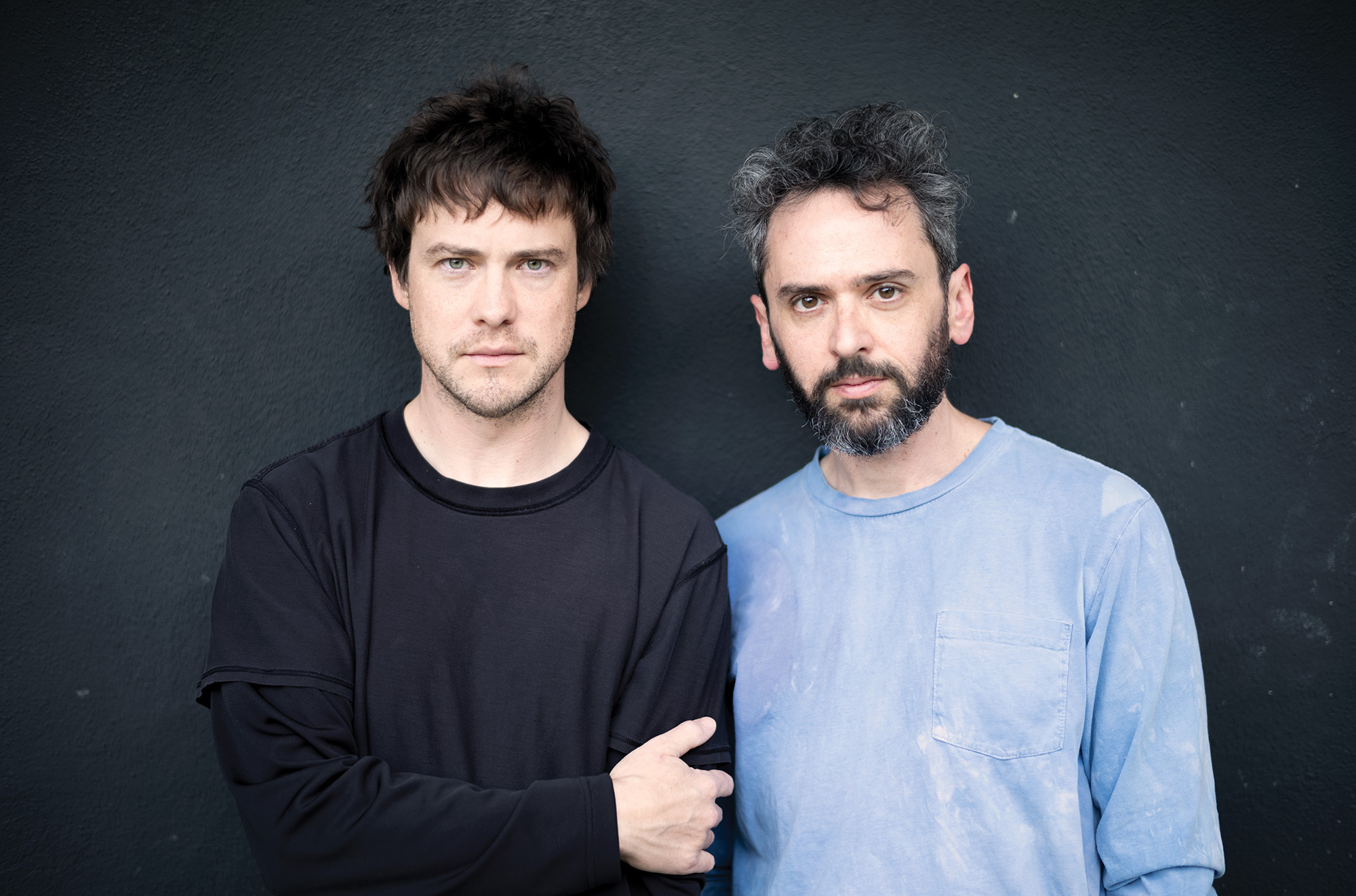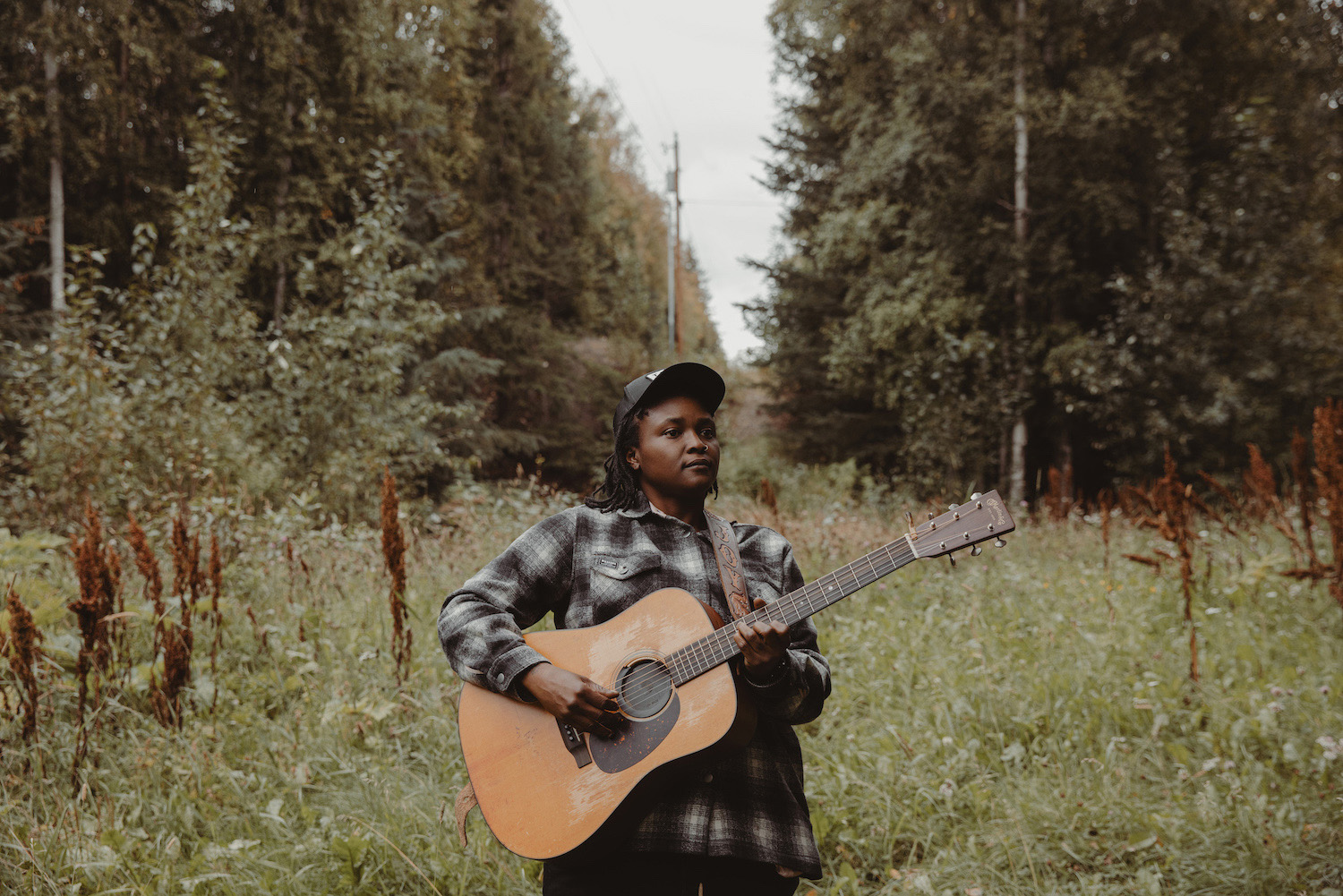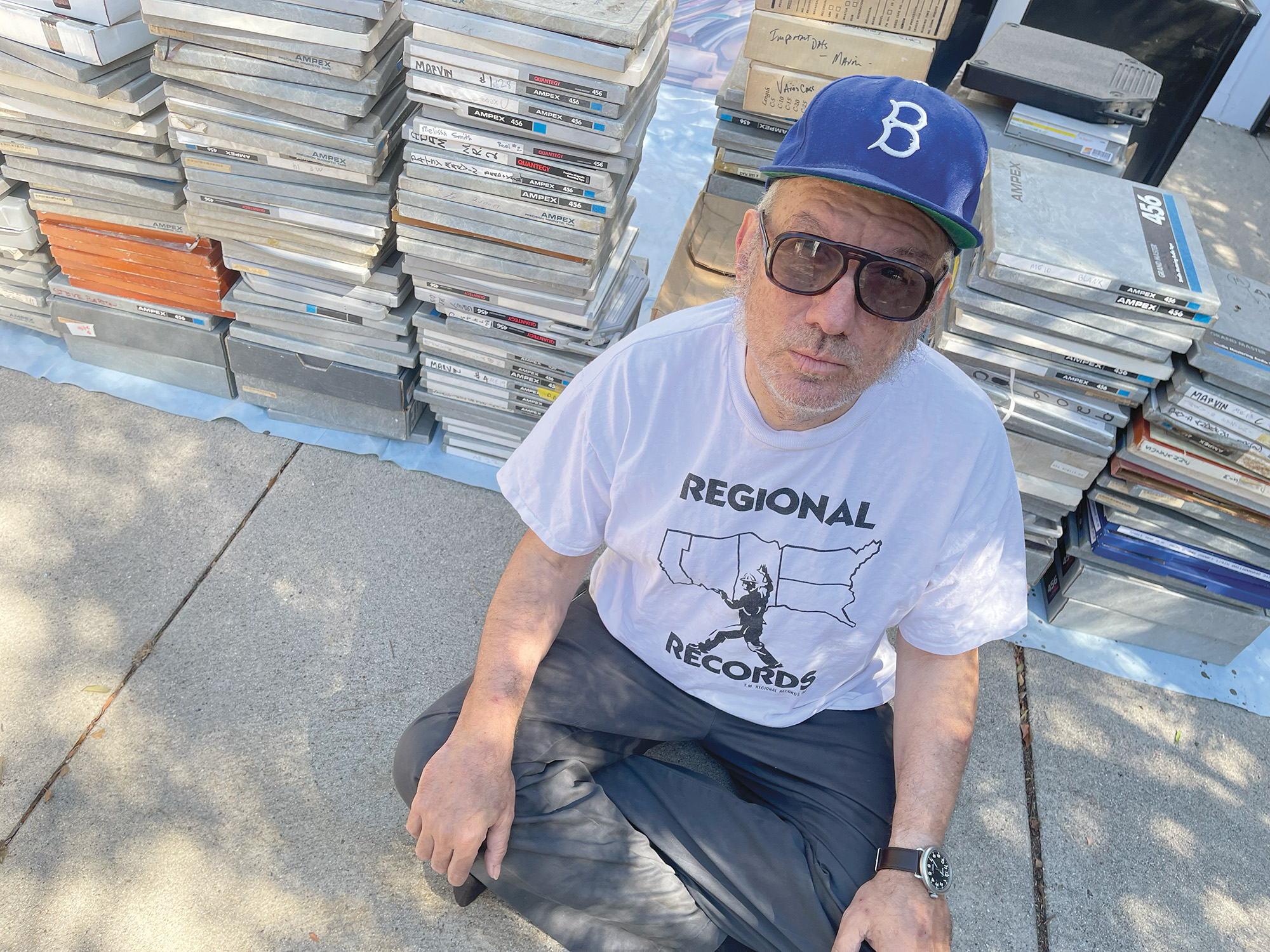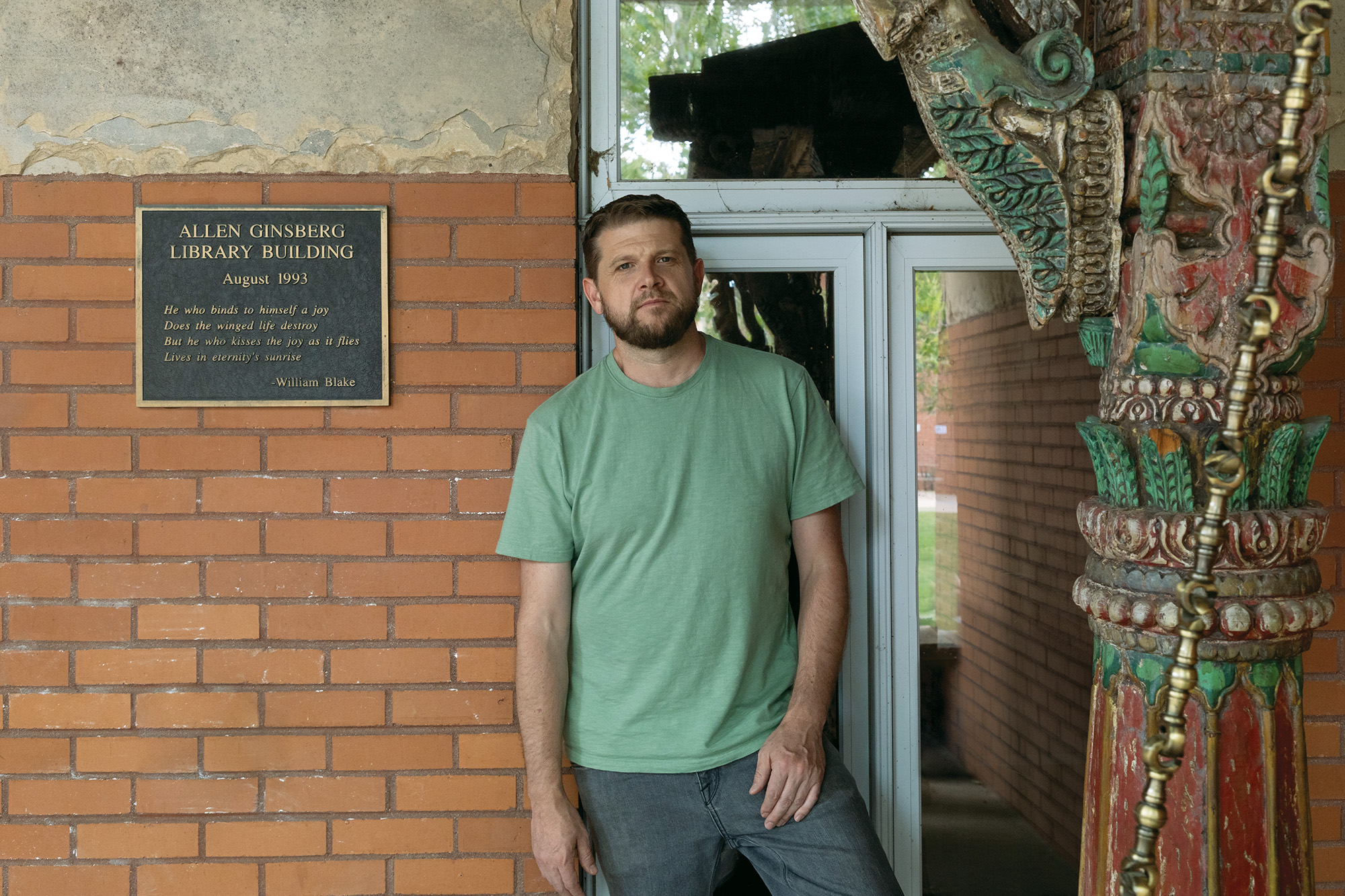How did you get your start in music?
I grew up playing in bands. I was the thumper on the drums. I went from that to jazz bass as a jobber. I did a Berklee summer program, then University of Toronto, and then went on to piano and producing. I grew up doing funk, jazz, and indie – playing in bands and songwriting, and I was sort of the drummer who knew too much. When I was doing electronic music, it was almost a "fuck music" attitude. A lot of people feel that way after coming out of jazz school! [laughter] But I was always using that education in some way. I got to learn a hundred standards, so the melodies are in there. Coming out of the electronic music scene, there was a point where the most modern electronic thing I could do was to record a super high-fidelity sound and then fuck around with it. I had released all this electronic dance music with a bit of rapping and singing. One song of mine got stolen by an Austrian store that used a talking pig to sing my song for their bio product. I won a lawsuit, and for the first time I had money!
I've never heard this story!
Yeah, I sued a talking pig. [laughter] I went from having a thousand bucks on a good day to suddenly having $90,000, and I spent it all going to Studios Ferber in Paris and making this album, Saskamodie, where every sound was recorded by hand. The room was the big room [Le Studio A] in Ferber, where Nina Simone and Ray Charles had recorded with all the old gear. That was the record that saved my career. You can get stuck in a mode – doing the same thing over and over – when you should be of your own time and make timeless things. Sometimes, in order to make something modern, you have to go back to an old time and then plot a new way forward. For me, that's often 1974, which musically was a great year. I go back to the '70s and think, "What would have happened if it was dance-y but not all tight and multitracked? How would that sound?" Find a new way forward, still making something modern and part of that. So, I was doing electronic music, and I had to find a way out of that box. I could see that, at the end of the day, sounds themselves get dated but the actual songs don't.
You're in L.A. now, right?
Yeah. I've been lucky, for the most part. Most of the people that I've worked with have been friends and also nearby. I've been outside the industry, for the most part. There are people who are sort of in the inner sanctum. Even if there was no label or no record being made, I would just want to be with them and want to make something. That's where the real gold happens, in my view. I did come to L.A., but I've never assimilated. I mean that in all humility. I'm never really someone that gets hired in the professional capacity, in that way. It's more that things I do have a life, and I like it that way. The times when I get hired, often it inhibits the creativity. It's an interesting thing, especially related to this record, because this was really a labor of love. It’s about how to find new spaces, sonically and emotionally.
This record, Music Will Explain, is awesome. It reminds me of some of those '60s vocal group records.
Yeah, that was kind of what I was after, because there's this sense that humanity itself is getting pushed to the sidelines somehow. How can I bring that into a modern way? How can I get the sound of a human? I went through a second or third crazy Brazilian phase the last couple of years. There's something about the way those vocals carry. Also disco, like the Bee Gees' where it's not just one voice.
That's a great example.
Yeah, you still get a song out of it. Not just a hook, the vocals actually carry the song. That was something that was always on my mind, but I could never quite get the sound because it would be multitracked, or it was a bunch of people on handheld mics. I finally cracked it on this record for the first time, not that there aren't stones still unturned that I'm excited to try. It came down to having everybody singing around one mic. I had a lot of harmonies arranged, which I ended up scuttling. I could only get that many people in a room for a couple hours. Most of the record was done in eight hours, if it was added up. There was not a lot of rehearsing possible. The singers don't really read music – some can, but that's another world and not how this works. We need to twist and adapt it, and find the voice and the range. Generally, it was groups of six, but sometimes it would be as much as twelve. Having six to eight women was the basic. I did three two-hour sessions like that. Then two sessions with six guys. There were some particular breakthroughs in the making of this.
You started by gathering a group of people around one mic and getting the vocal parts?
Yeah, totally. Different songs happened in different ways. I had demos and I had planned it, but none of that made it through to the final mix. Basically, it was people around one mic. I had a "skeleton" in my headphones, but they couldn't hear it. I had to have the key and the structure. They had no headphones at all and hadn't heard the music. We were getting the key on the piano and then I was conducting them to my Ampex 440 C [2-track tape deck], which is a whole other necessary part. Until I had that, I couldn't have done this. Because of the way dynamics operate over time, it enabled me to create enough of a narrative through the music that it's not just loops and editing. Also, it opened up the highs in a way that I just can't on the computer. That opened up space for me, emotionally. It's all about emotional space; space for empathy, and space for humanity. I started with that, and then I would put those chunks of tape into [Avid] Pro Tools. From there, it was back to being an electronic musician.
To build the tracks up instrumentally around the vocals?
Yeah, the last thing that went down was the drums. I kept trying to do the drums; it was sonically there, but it wasn't quite what I wanted. It was either too clean or too lo-fi. Finally, using the tape machine with the Ecoplate [plate reverb], I was getting close. I'd be A/B’ing music that I love, and trying to understand, "How does it function?" These days, we have so much bass and it's oppressive. But we live in a post, "When Doves Cry" Prince world. We don't necessarily need bass, even though it's sacrilege to say it. So, a lot of it revolved around not doing too much bass, keeping the bass in the higher range, and letting the kit be about the snare. You've just got to hear the backbeat; you don't really need to hear the kick as much as you need to know where the backbeat is. Pinning it between the vocal and backbeat was the final breakthrough. My friend, Lucky Paul [Paul Taylor], left a Brady [Drum Company] snare here when he went off on tour – this high-end Australian snare that I could never afford. It’s made out of a solid trunk of a tree.
Oh, carved out inside?
Yeah. I just use my kid's kit half the time. I finally thought, "Let me put that in," and it was like, "Bingo!" Now, every little roll, every little imprecise thing, you can hear it. It's got character and it's got the right sound. So much depends on the original sound. We always say that, but this was a case in point. I then rerecorded all the drums on the whole album in two hours. I just had the choir, so in a couple of cases I threw on a click. But for most of it, I didn't work with a click. I have a different sense of rhythm, so even when I record to click I end up having to edit it more. If I record off a click, I can edit it like a tape machine. I just move it around until it sounds good, and nobody has to tell me where it has to go.
Sometimes you'll play a great part, but then you can hear yourself pushing or pulling to get to the click a little bit.
Yeah, that feels wrong. For me, the click is the vocal. Whether it's working with Feist or Jamie Lidell, where I've had the opportunity to be on the kit while they're laying it down. It comes to a bar-by-bar decision. There's no right or wrong. It comes to the inflection of the voice or the inflection of the bass at that time. Then you've got to smack it right where it has to be. Not too early, not too late; and you have to predict it on a bar-to-bar basis. That's why playing along to a machine as a drummer pissed me off. The only machine I'll play to is the [Linn] LM-1 [Drum Computer]. It's like they took that into consideration because it was so early on. There's a certain chaos to it that, like they wheeled that thing in and attempted to replace Steve Gadd. I think it's doing what it needed to do to power the '80s.
For sure!
Other than that, I get annoyed when I have to play along to a machine. What I will always play along to is the melody. For me, a good singer's time is beyond reproach. If you can get to that level of kinetic interplay and be all together playing the song, then you're actually playing music. It's a time-based art form. That's the whole thing I love about music. It's like a time machine. Now, multitracking and working the way where I kind of play everything, basically I'm the band. To make that feel natural is what I feel I got closer to on this record than ever before, because it's not about looping. I have to play the whole song, from beginning to end. To do that, I usually play characters when I go to the instruments.
Oh, yeah. I'll think about different bass players. "I'm so-and-so right now."
Exactly. Suddenly, now you're playing music. In the conversation about building this album and this multitracking myself, the tape machine was crucial for that. That's where I'd get that license, sonically, to be a little off – whether it's a tempo or a fill that shouldn't have been there. Somehow the tape builds its own chaos into the process. The tape adds something, whereas a computer can, at best, faithfully reproduce. Some of the drums and tambourine ended up being extra gritty due to my unorthodox way of working. The tape machine would be giving so many artifacts. I was waiting for my friend to come and give the tape deck the once over, but I couldn't stop because I had the choir in there. I was recording a bunch of drums, and then he came and fixed it. Some of the snare rolls and cymbals, you can hear this sound where the tape is modulating. I could spend $600 on a flanger to do it, or I could just record it the day before the tape repairer shows up. I have my tape machine plugged right into my old Siemens [preamp] and Neumann mic, right in the middle of the room beside the plate reverb. Through doing that, I can do stuff like print the drum kit to the Ecoplate, reverse it, and sit down and chop it up for a second. By having those pieces right under my fingertips, even slowing down the tape with my own finger, was part of this process.
When you were tracking the vocals, were you moving people around in the room to find a balance?
A little bit. Probably not as much as I could have, because I had them for three hours and I’d try to figure out about four or five songs. It'd often sound great right away, because it's people singing in unison. It has a magic. There would be a moment where it was suddenly, "That sounds like one voice." Even though some were super alto, soprano, and tenor, somehow, when it clicked, it was like, "That's it." That was the sound that I'd been searching for. But yeah, sometimes moving some of the higher voices, like if someone was sticking out, I'd say, "Walk to the corner." But it was more about getting what I could, with tapes rolling with the singers and one assistant, Nana [Adjoa], who was joining the choir and couldn't operate the tape. I was operating the tape with one hand, Pro Tools or some reference with the other, and then the choir standing there. So, I'd be hearing the thing, going, "Okay, here we go."
Were you giving them visual cues?
Yeah, I was conducting hard. Through the process, I got better at being a beat ahead, almost. The way I work, I move stuff around constantly. It wasn't that much of an issue, to be honest. I still hear things where the way they sang it was pretty behind, and maybe I could have brought it up a bit, but I didn't want to overdo it. I tried to approach Pro Tools like tape edits – don't go too crazy.
When you were doing overdubs, how did you use the tape?
Everything except the bass was done to tape. Using the repro [head], hitting the tape, then into Pro Tools, and nudging it back. For a while there, I had the exact number [of samples to line it back up].
It should be on a Post-It on your wall. [laughter]
I know!
How did the idea for Music Will Explain come about?
I did a whole album before this that I shelved. They were more safe, super funky, cool, and groovy. I'll probably release them someday, featuring vocals. I recently played some to Peanut Butter Wolf [Christopher George Manak] and he was loving it, so I could be wrong. But when I put them all together, I couldn't say that it was an artistic statement as an album. A lot of people these days would say, "Why do you need to make an artistic statement as an album? It's not relevant." But for me it is, because the art form of making an album gives me a threshold and a framework. Take ten songs and define what an artist is in that moment of their career. If you asked AI, "What would Mocky’s next album be?" it would probably be funky, groovy, acoustic, dance-y, electronic, and jazzy, right? But I started on this path that brought me to this album, which was a mad man in his garage who's got kids to feed, who should be paying the bills and doing other things. I got the tape machine and the Ecoplate during Covid [lockdown]. My manager, when I was at my lowest point and I didn't quite know how to come back from ditching the album, was saying, "I remember when you were living in Berlin, you were working on this choir and drums concept album." I was like, "Bingo!" I was searching for the human answer. It feels like empathy and compassion are getting sidelined and harder to come by.
You've worked with Jamie Lidell, who I've interviewed and hung out with.
I learned from Jamie. He taught me so much as a producer on [Jamie Lidell’s] Multiply. I was the wide-eyed guy who could play the chords, and Jamie was this sonic visionary who could sing. We came together in a classic songwriting duo way, but I learned so much about production. He's got a great engineering and production mind to see the finished product through. He'll know what's got to be here. While working on Multiply, we had this conversation, "People can either spend their 15 bucks on Missy Elliott, or whatever the hell we're making. This better be good." That's the seeds of it right there. Obviously, as a singer and a sonic force, those shows back in the day were killer.
I imagine.
With Feist, being part of it is a similar thing. It isn't just treading over stuff we've heard before. That goes to the core of, "What does it mean to be an artist?"
How did those relationships with Feist and Jamie form?
With Feist, it's been since Canada, because we came up in the same scene. We were working together forever and had already started writing together. That's the Canadian Crew: Us and Peaches, Chilly Gonzales, Taylor Savvy, and more. We all came up in the same era in Toronto and then went different places. Peaches went to Berlin and Gonza [Chilly Gonzales] went to Paris. I had moved to Berlin. You could say I was reaching the limits of my voice, like what my voice could do. I could rap a little and sing a little, but I could write. One day I went over to Taylor Savvy's house, and he gave me a demo. He said, "This is this guy Jamie singing the chorus." When that chorus came on, I was like, "What? Whoever is singing that lives on this street?" It was on. Within the next few days, I bumped into him, and he was working on an album for Warp [Records]. Suddenly, we were caught up in ten days of working on a song of mine called "How Will I Know You?" I'm kind of rappy singing and he's singing the hook. I'm still proud of it to this day, even if I would maybe mute my own raps! [laughter] From there, we started to work on Multiply at this abandoned horse stable in East Berlin. We had a jam with this other incredible artist, Kevin Blechdom – Kristin Erickson is her name. There was a guitar there, which is a novelty because it was all laptops and drum machines. We jammed on "Sitting on the Dock of the Bay" or something. I could play it, and Jamie could sing it. And then we came up with Multiply. I still had never seen him play live. We'd been working together, and then one day we were booked on the same festival in Belgium or somewhere. I don't know if you ever saw Jamie's solo show in the early 2000s?
No, but I've heard…
I was just electrified. The way he would loop and multiply his voice. You kind of hear it on the album and get a sense of it. But, as an improviser, it was one of the most incredible things I'd ever heard. After that, I then made that acoustic album [Saskamodie] of mine. If I could play behind Jamie and Feist, why don't I just connect the dots? So, that's when I sued the talking pig. My session was ten days, ten songs, no holds barred, and beautiful sonics. I've carried that attitude with me. It should sound like a moment in time. I have a lot of friends that I work with as a producer; they work with their laptops and they’re producers. I kind of refuse to produce them. I have them over, listen to their stuff, and maybe edit or suggest, but I keep saying no. Especially with friends of mine, it's like, "No, you're the producer." Of course, we need trusted friends and allies, and we need people that know what they're talking about. But you can do it. You can make a certified classic using any piece of gear, if you have the right attitude. ![]()
